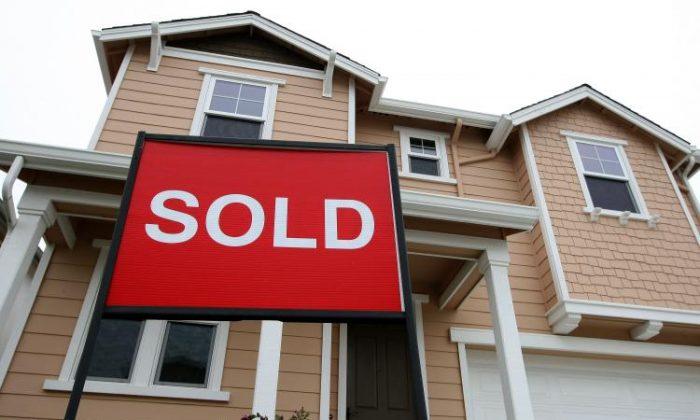The average rate for a 30-year fixed mortgage rose close to a full percentage point from the start of this year up until the week ending Feb. 25, when it hit 4.18 percent, according to Mortgage News Daily.
The 30-year rate fell below 4 percent to 3.90 percent on March 1, but recovered to 4.08 percent the following day.
The latest development is expected to give homebuyers more purchasing power for the upcoming historically busy spring season and will also keep record-high home prices on their upward path.
Home prices in January were 19.1 percent higher than from the month in 2021, the highest level of growth seen in 45 years, according to a report released on March 1 by CoreLogic.The yield on the 10-year Treasury declined 0.128 percentage points on March 1 to 1.708 percent at its lowest level since late January, but recovered the following day, rising to 1.838 percent.
The impact on yields will eventually be seen in mortgage rates, which are sensitive to the 10-year Treasuries, said Kan.
Over the past three months, 5-year Treasuries have risen 0.10 percent more than 10-year Treasuries.
Demand for mortgage applications fell 0.7 percent on the week ending Feb. 25, from the week prior, due to the higher mortgage rate, according to an MBA weekly survey.
“Mortgage rates last week reached multi-year highs, putting a damper on applications activity,” said Kan.
“The 30- year fixed rate reached its highest level since 2019 at 4.15 percent, and the refinance share of applications dipped below 50 percent.”
“Although there was an increase in government refinance applications, higher rates continue to push potential refinance borrowers out of the market,” he said.
Meanwhile, the seasonally adjusted Purchase Index decreased 2 percent from one week earlier.
The unadjusted Purchase Index increased 1 percent compared with the previous week and was 9 percent lower than the same week one year ago.
“Purchase activity remained weak, but the average loan size increased again, which indicates that home-price growth remains strong, and a greater share of the activity is occurring at the higher end of the market,” said Kan.
The rise in mortgage rates since January have eroded affordability for buyers and much depends on how long the drop in rates will continue.
Mortgage-backed security durations unlike Treasuries can vary depending upon demand for refinancing.
If home buyers refinance or sell their homes faster, the bond term does not last as long.
For now, the move in Treasuries is causing the pullback in mortgage rates, which are governed more directly by demand for mortgage-backed bonds.
There has been more demand for short-term debt since the crisis in Ukraine, so mortgage rates are keeping better pace with the broader bond market.
The question is how long the situation will last depending on what happens in Ukraine and other unrelated factors weighing on the mortgage market.







Friends Read Free